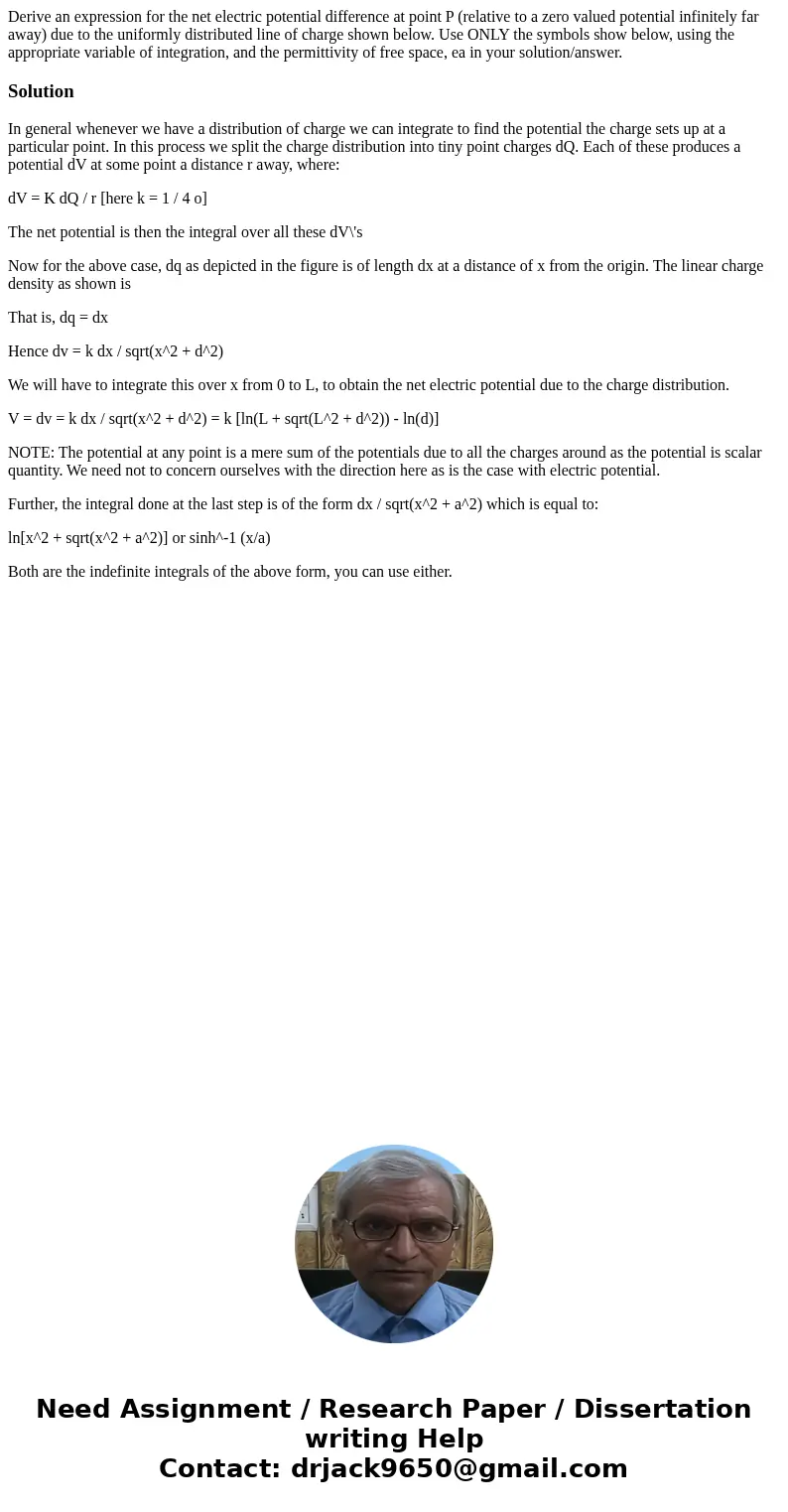Derive an expression for the net electric potential differen
Solution
In general whenever we have a distribution of charge we can integrate to find the potential the charge sets up at a particular point. In this process we split the charge distribution into tiny point charges dQ. Each of these produces a potential dV at some point a distance r away, where:
dV = K dQ / r [here k = 1 / 4 o]
The net potential is then the integral over all these dV\'s
Now for the above case, dq as depicted in the figure is of length dx at a distance of x from the origin. The linear charge density as shown is
That is, dq = dx
Hence dv = k dx / sqrt(x^2 + d^2)
We will have to integrate this over x from 0 to L, to obtain the net electric potential due to the charge distribution.
V = dv = k dx / sqrt(x^2 + d^2) = k [ln(L + sqrt(L^2 + d^2)) - ln(d)]
NOTE: The potential at any point is a mere sum of the potentials due to all the charges around as the potential is scalar quantity. We need not to concern ourselves with the direction here as is the case with electric potential.
Further, the integral done at the last step is of the form dx / sqrt(x^2 + a^2) which is equal to:
ln[x^2 + sqrt(x^2 + a^2)] or sinh^-1 (x/a)
Both are the indefinite integrals of the above form, you can use either.

 Homework Sourse
Homework Sourse